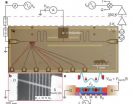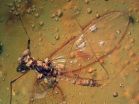(Press-News.org) SEATTLE – One of the world's leading bone marrow transplant experts is recommending a significant change to current transplant practice for patients who need marrow or adult stem cells from an unrelated donor to treat hematologic malignancies. Fred Appelbaum, M.D., director of the Clinical Research Division at Fred Hutchinson Cancer Research Center, asserts that bone marrow – not circulating, peripheral blood, which is the current norm – should be the source for unrelated donor adult stem cells for most patients who require a transplant. The reason: because there is less incidence of chronic graft-versus-host disease (GVHD), which can be a debilitating side effect of transplantation.
Appelbaum called for the change in an Oct. 18 editorial in The New England Journal of Medicine in response to a new study, published in the same issue, which compared survival rates and side effects of treating patients with hematopoietic adult stem cells derived from bone marrow versus circulating peripheral blood. The study found a higher incidence of chronic GVHD – 53 percent when peripheral blood was the source of stem cells for transplant – versus 41 percent when bone marrow is the source.
"For the majority of unrelated transplants following a standard high-dose preparative regimen, bone marrow should be used since survival is equivalent with the two sources but the incidence of chronic graft-versus-host disease, which can be a debilitating complication, is significantly less with marrow," Appelbaum wrote.
GVHD is a common side effect in people who receive cells from an unrelated donor. It occurs when the transplanted cells recognize the recipient's tissues as foreign and attack the tissues. This can cause a variety of problems, including skin rashes, liver problems and diarrhea. Chronic GVHD can develop any time between three months and three years after the transplant and can range from mild to serious in intensity.
Appelbaum said that stem cells derived from peripheral blood should only be used for the minority of patients in whom the benefits outweigh the risks. These include patients in need of rapid engraftment, such as those with life-threatening infections, or patients at high risk for graft rejection, such as those who receive reduced-intensity conditioning that does not include intensive chemotherapy.
For the past 10 years peripheral blood has been the norm as a source of matched related and matched unrelated adult stem cells for transplant because, despite the higher risk of GVHD, they are easier to harvest from the donor, they can be stimulated to grow in large numbers prior to harvesting, and they engraft, or set up shop, quickly inside the recipient's body.
The potential impact if such a practice change were widely implemented is large. Currently, about 75 percent of unrelated donor transplants are done using stem cells that are collected from the peripheral blood of donors. About 70 percent of all patients who undergo a life-saving transplant to treat blood cancers such as leukemia require an unrelated donor. Collecting adult stem cells from bone marrow is a more invasive process than collecting them from the bloodstream.
According to Appelbaum, about 5,500 unrelated donor transplants were performed in the United States last year. More than 20 million potential unrelated donors are typed and listed in registries in the Americas, Europe and Asia.
The study that compared the two sources of adult stem cells was the first randomized trial of its kind to compare the two sources of cells. It was led by former Hutchinson Center transplant physician Claudio Anasetti, M.D., who is now at the H. Lee Moffitt Cancer Center in Tampa, Fla. It found no difference in two-year survival, faster engraftment and less graft failure, but a significant increase in chronic GVHD, when patients were transplanted with stem cells derived from peripheral blood.
"While this study should change practice, it will be interesting to see if it really does," Appelbaum wrote. "The benefits of peripheral blood are seen early, under the watchful eyes of the transplant physician, while the deleterious effects occur late, often after the patient has left the transplant center."
### Editor's note: To obtain an embargoed copy of the Appelbaum editorial, "Pursuing the Goal of a Donor for Everyone in Need," contact Dean Forbes at dforbes@fhcrc.org or 206-667-2896.
At Fred Hutchinson Cancer Research Center interdisciplinary teams of world-renowned scientists – including three Nobel laureates – seek new and innovative ways to prevent, diagnose and treat cancer, HIV/AIDS and other life-threatening diseases. The Hutchinson Center's pioneering work in bone marrow transplantation led to the development of immunotherapy, which harnesses the power of the immune system to treat cancer with minimal side effects. An independent, nonprofit research institute based in Seattle, the Hutchinson Center houses the nation's first and largest cancer prevention research program, as well as the clinical coordinating center of the Women's Health Initiative and the international headquarters of the HIV Vaccine Trials Network. Private contributions are essential for enabling Hutchinson Center scientists to explore novel research opportunities that lead to important medical breakthroughs. For more information visit www.fhcrc.org or follow the Hutchinson Center on Facebook, Twitter or YouTube.
CONTACT
Dean Forbes
206-667-2896
dforbes@fhcrc.org
Leading bone marrow transplant expert recommends significant change to current practice
Adult stem cells harvested from bone marrow rather than blood of unrelated donors are best for reducing the risk of graft-versus-host disease
2012-10-18
ELSE PRESS RELEASES FROM THIS DATE:
Study finds potential new drug therapy for Crohn's disease
2012-10-18
Ustekinumab, an antibody proven to treat the skin condition psoriasis, has now shown positive results in decreasing the debilitating effects of Crohn's Disease, according to researchers at the University of California San Diego, School of Medicine. The study will appear in the October 18, 2012 issue of the New England Journal of Medicine (NEJM).
Results from the clinical trial showed ustekinumab (Stelara) increased clinical response and remission in patients suffering from moderate-to-severe Crohn's Disease - a form of inflammatory bowel disease (IBD) that can lead ...
Bus service for qubits
2012-10-18
Qubit-based computing exploiting spooky quantum effects like entanglement and superposition will speed up factoring and searching calculations far above what can be done with mere zero-or-one bits. To domesticate quantum weirdness, however, to make it a fit companion for mass-market electronic technology, many tricky bi-lateral and multi-lateral arrangements---among photons, electrons, circuits, cavities, etc.---need to be negotiated.
A new milestone in this forward march: a Princeton-Joint Quantum Institute (JQI) collaboration announces the successful excitation ...
Study: Nearly 4 out of 10 lesbians not routinely screened for cervical cancer
2012-10-18
ANAHEIM, Calif. – Oct.17, 2012. Nearly 38 percent of lesbians polled in a national survey were not routinely screened for cervical cancer, putting them at risk of developing a highly preventable cancer, according to a University of Maryland School of Medicine study being presented at the 11th Annual AACR International Conference on Frontiers in Cancer Prevention Research. Cervical cancer is caused by a sexually transmitted virus, the human papillomavirus (HPV), and can be detected through regular Pap smears.
The percentage of lesbians not being screened as recommended ...
New model reconciles the Moon's Earth-like composition with the giant impact theory of formation
2012-10-18
The giant impact believed to have formed the Earth-Moon system has long been accepted as canon. However, a major challenge to the theory has been that the Earth and Moon have identical oxygen isotope compositions, even though earlier impact models indicated they should differ substantially. In a paper published today in the journal Science online, a new model by Southwest Research Institute (SwRI), motivated by accompanying work by others on the early dynamical history of the Moon, accounts for this similarity in composition while also yielding an appropriate mass for Earth ...
Proof at last: Moon was created in giant smashup
2012-10-18
It's a big claim, but Washington University in St. Louis planetary scientist Frédéric Moynier says his group has discovered evidence that the Moon was born in a flaming blaze of glory when a body the size of Mars collided with the early Earth.
The evidence might not seem all that impressive to a nonscientist: a tiny excess of a heavier variant of the element zinc in Moon rocks. But the enrichment probably arose because heavier zinc atoms condensed out of the roiling cloud of vaporized rock created by a catastrophic collision faster than lighter zinc atoms, and the remaining ...
Giant impact scenario may explain the unusual moons of Saturn
2012-10-18
SANTA CRUZ, CA--Among the oddities of the outer solar system are the middle-sized moons of Saturn, a half-dozen icy bodies dwarfed by Saturn's massive moon Titan. According to a new model for the origin of the Saturn system, these middle-sized moons were spawned during giant impacts in which several major satellites merged to form Titan.
Erik Asphaug, professor of Earth and planetary sciences at the University of California, Santa Cruz, will present this new hypothesis October 19 at the annual meeting of the Division for Planetary Sciences of the American Astronomical ...
The evolutionary origins of our pretty smile
2012-10-18
It takes both teeth and jaws to make a pretty smile, but the evolutionary origins of these parts of our anatomy have only just been discovered, thanks to a particle accelerator and a long dead fish.
All living jawed vertebrates (animals with backbones, such as humans) have teeth, but it has long been thought that the first jawed vertebrates lacked pearly gnashers, instead capturing prey with gruesome scissor-like jaw-bones.
However new research, led by the University of Bristol and published today in Nature, shows that these earliest jawed vertebrates possessed teeth ...
Epigenetic analysis of stomach cancer finds new disease subtypes
2012-10-18
DURHAM, N.C. – Researchers at the Duke-NUS Graduate Medical School in Singapore have identified numerous new subtypes of gastric cancer that are triggered by environmental factors.
Reported in the Oct. 17, 2012, issue of the journal Science Translational Medicine, the findings are based on the science of epigenetics, a study of gene activity. The insights into the complexities of stomach cancer could lead to better treatment approaches for the second leading cancer killer in the world, behind lung cancer.
"Gastric cancer is a heterogenous disease with individual patients ...
Physical activity shown to help young and elderly alike with lower-leg coordination
2012-10-18
An Indiana University study that examined the effect of age and physical activity on lower leg muscle reflexes and coordination concluded that participation in physical activity was beneficial for lower leg muscle coordination across both sides of the body in both young and older study participants. Lower limb muscle communication is essential for everyday tasks, such as walking, balancing, and climbing stairs.
"The results of this study suggest that participation in physical activity contributes to greater crossed-spinal reflex stability in both young and elderly subjects," ...
Springtail bugs may have travelled on the wings of mayflies
2012-10-18
A mayfly trapped in 16-million-year-old-amber reveals a hitchhiking springtail, a wingless arthropod that is amongst the most commonly found bugs all over the world. The new research, published Oct 17 in the open access journal PLOS ONE led by David Penney from the University of Manchester, UK, is the first to show that springtails travelled on winged insects like mayflies, and only the second example of this mode of travel by springtails in the past or present.
Springtails are among the most abundant group of arthropods, found in large numbers in soil all over the world. ...
LAST 30 PRESS RELEASES:
Making lighter work of calculating fluid and heat flow
Normalizing blood sugar can halve heart attack risk
Lowering blood sugar cuts heart attack risk in people with prediabetes
Study links genetic variants to risk of blinding eye disease in premature infants
Non-opioid ‘pain sponge’ therapy halts cartilage degeneration and relieves chronic pain
AI can pick up cultural values by mimicking how kids learn
China’s ecological redlines offer fast track to 30 x 30 global conservation goal
Invisible indoor threats: emerging household contaminants and their growing risks to human health
Adding antibody treatment to chemo boosts outcomes for children with rare cancer
Germline pathogenic variants among women without a history of breast cancer
Tanning beds triple melanoma risk, potentially causing broad DNA damage
Unique bond identified as key to viral infection speed
Indoor tanning makes youthful skin much older on a genetic level
Mouse model sheds new light on the causes and potential solutions to human GI problems linked to muscular dystrophy
The Journal of Nuclear Medicine ahead-of-print tip sheet: December 12, 2025
Smarter tools for peering into the microscopic world
Applications open for funding to conduct research in the Kinsey Institute archives
Global measure underestimates the severity of food insecurity
Child survivors of critical illness are missing out on timely follow up care
Risk-based vs annual breast cancer screening / the WISDOM randomized clinical trial
University of Toronto launches Electric Vehicle Innovation Ontario to accelerate advanced EV technologies and build Canada’s innovation advantage
Early relapse predicts poor outcomes in aggressive blood cancer
American College of Lifestyle Medicine applauds two CMS models aligned with lifestyle medicine practice and reimbursement
Clinical trial finds cannabis use not a barrier to quitting nicotine vaping
Supplemental nutrition assistance program policies and food insecurity
Switching immune cells to “night mode” could limit damage after a heart attack, study suggests
URI-based Global RIghts Project report spotlights continued troubling trends in worldwide inhumane treatment
Neutrophils are less aggressive at night, explaining why nighttime heart attacks cause less damage than daytime events
Menopausal hormone therapy may not pose breast cancer risk for women with BRCA mutations
Mobile health tool may improve quality of life for adolescent and young adult breast cancer survivors
[Press-News.org] Leading bone marrow transplant expert recommends significant change to current practiceAdult stem cells harvested from bone marrow rather than blood of unrelated donors are best for reducing the risk of graft-versus-host disease



